Weasels
North Dakota is home to three species of weasels, long-tailed weasels being the most common.
All three species transition between a summer and winter color phases in North Dakota, where they are brown with lighter colored underbellies in the summer and white in the winter.
This transition between color phases is triggered by changes in daylight length in the spring and fall.
| Common name | Long-tailed weasel | Short-tailed weasel or ermine | Least weasel |
|---|---|---|---|
| Scientific name | Neogale frenata | Mustela erminea | Mustela nivalis |
| Tracks | Front/Rear ¾ x 1-½” | Front/Rear ½ x ¾” | Front/Rear ⅓ x ¾” |
| Description | Long tail that is almost half the length of the body, with a black tip. Brown feet. | Shorter tail, approximately 1/3 the length of the body, with a black tip. White feet. | Short tail, less than 1/4 the body length, without a black tip. White feet. |
| Total length | 11-16 inches | 8-13 inches | 8-10 inches |
| Weight | 4-13 ounces | 2-6 ounces | 1-3 ounces |
| Habitat | Inhabit a wide variety of habitat types, including wetlands, prairies, forests, and uncultivated or urban edges. | Prefers more dense woodlands, wetlands, and grasslands than the long-tailed weasel. Well-adapted to the snow. | Similar to long-tailed weasels, least weasels live in a wide variety of habitats, including riparian areas, prairies, farmlands, forests, etc. |
| Breeding season | July-August (fertilized eggs then delay implantation for 8-9 months) | April-May (fertilized eggs then delay implantation for 9-10 months) | Year-round, may have more than one litter per year |
| Gestation period | 27 days | 28 days | 35 days |
| Litter size | 3-9 (average 4-5) | 4-13 (average 6) | 1-10 (average 4-5) |
| Social aspects | Solitary, except when breeding or rearing young. | Solitary, except when breeding or rearing young. | Solitary, except when breeding or rearing young. |
| Food habits | Carnivorous, preying primarily on small mammals including voles, mice, shrews, ground squirrels, pocket gophers, rabbits, and muskrats. To a lesser extent they may eat birds, eggs, snakes, and carrion. | Preys primarily on small mammals, particularly voles, followed by mice, shrews, ground squirrels, etc. Occasionally eats reptiles, amphibians, worms, and insects. | Also preys primarily on small mammals, including voles, mice, shrews, and moles. |
| Fun fact | Most abundant weasel species in North America. | Historically, the white winter pelts of ermine could only be worn by royalty. | Least weasels are the smallest predator in North America. |
Color Phases
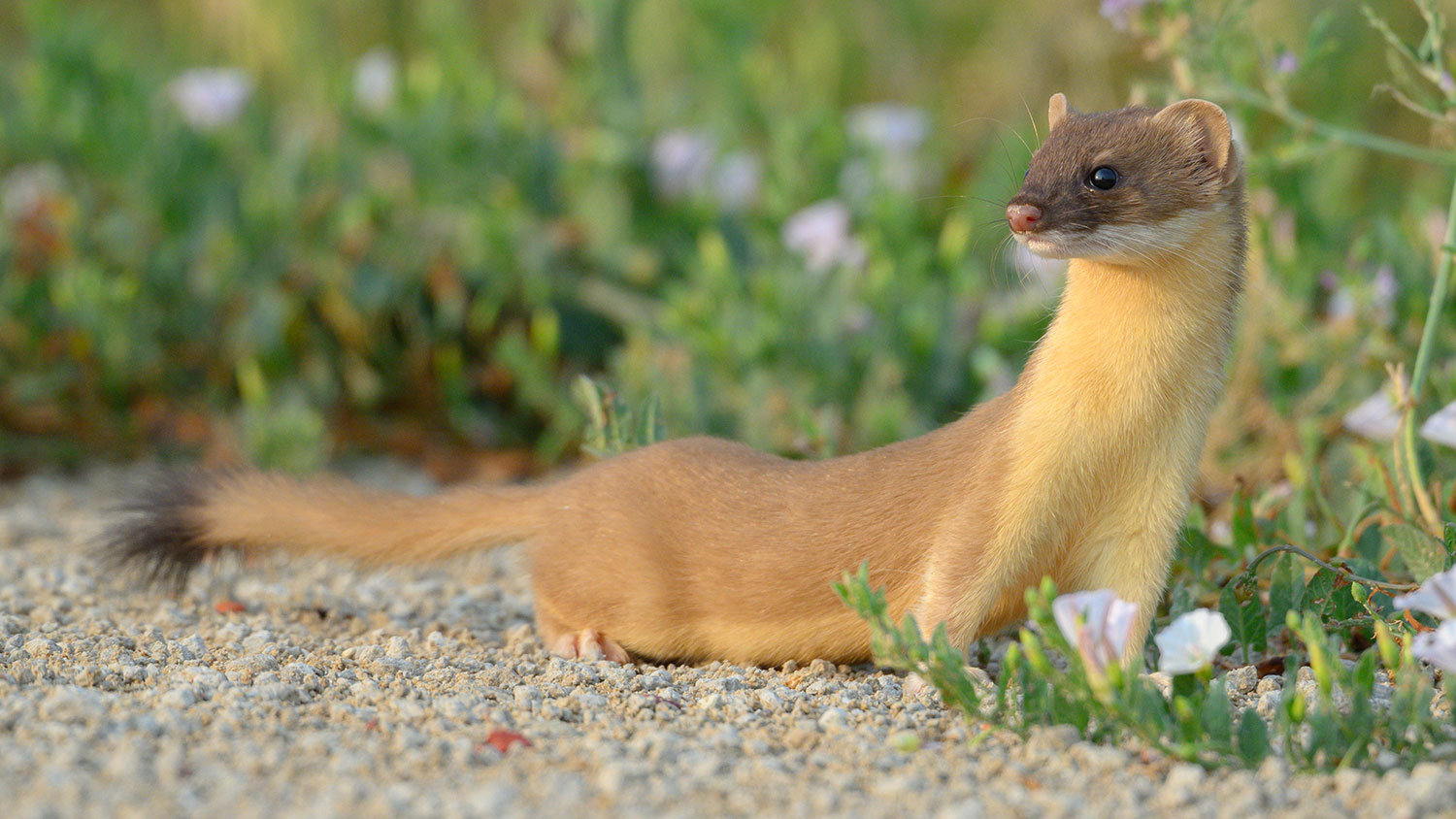
Pictured: Long-tailed weasel summer coat
Short-tailed and least weasels are similar in color, however both have white feet whereas the long-tailed weasel has brown feet in the summer.
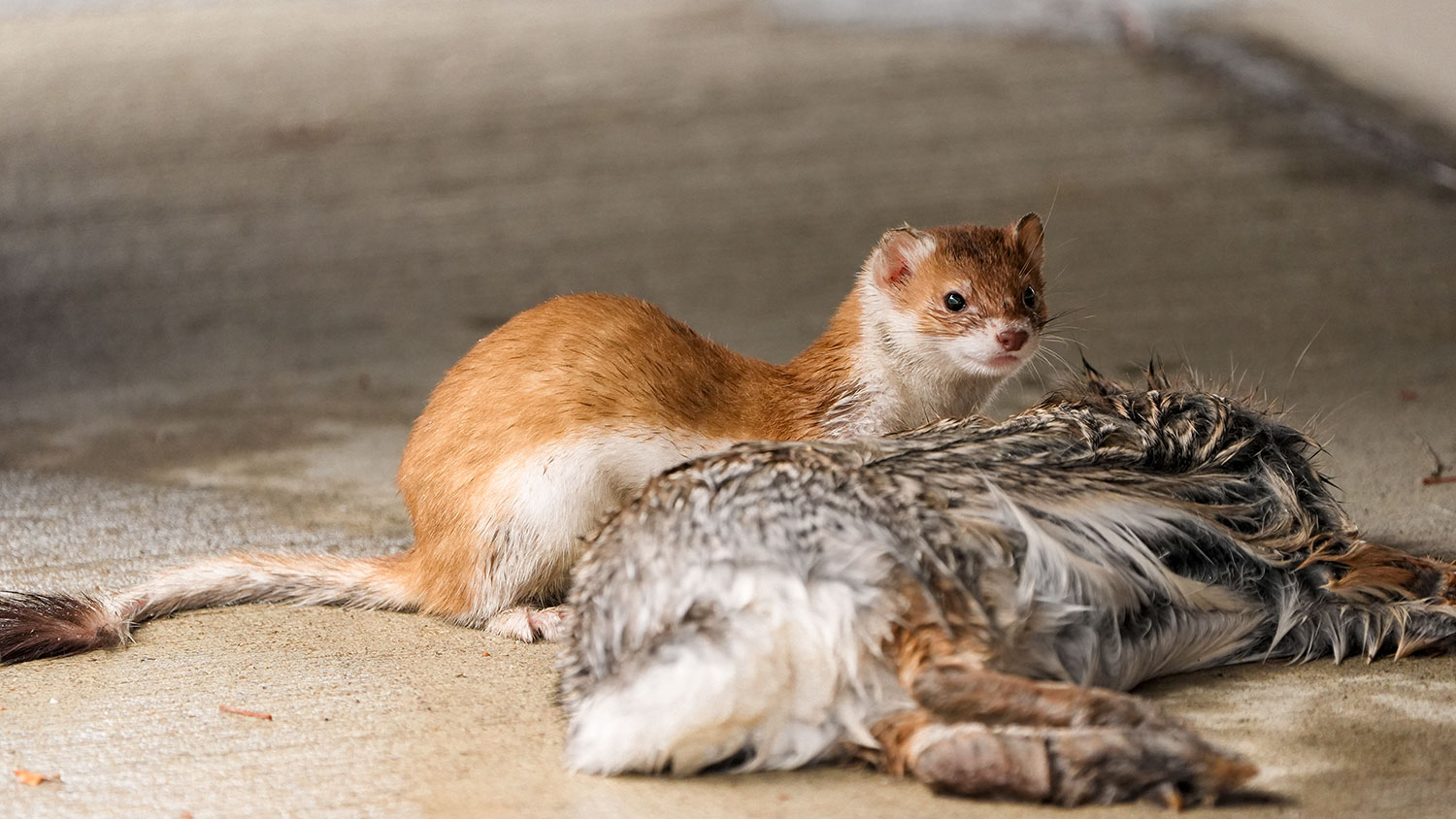
Pictured: Long-tailed weasel transitional coat
Short-tailed and least weasels are similar in color
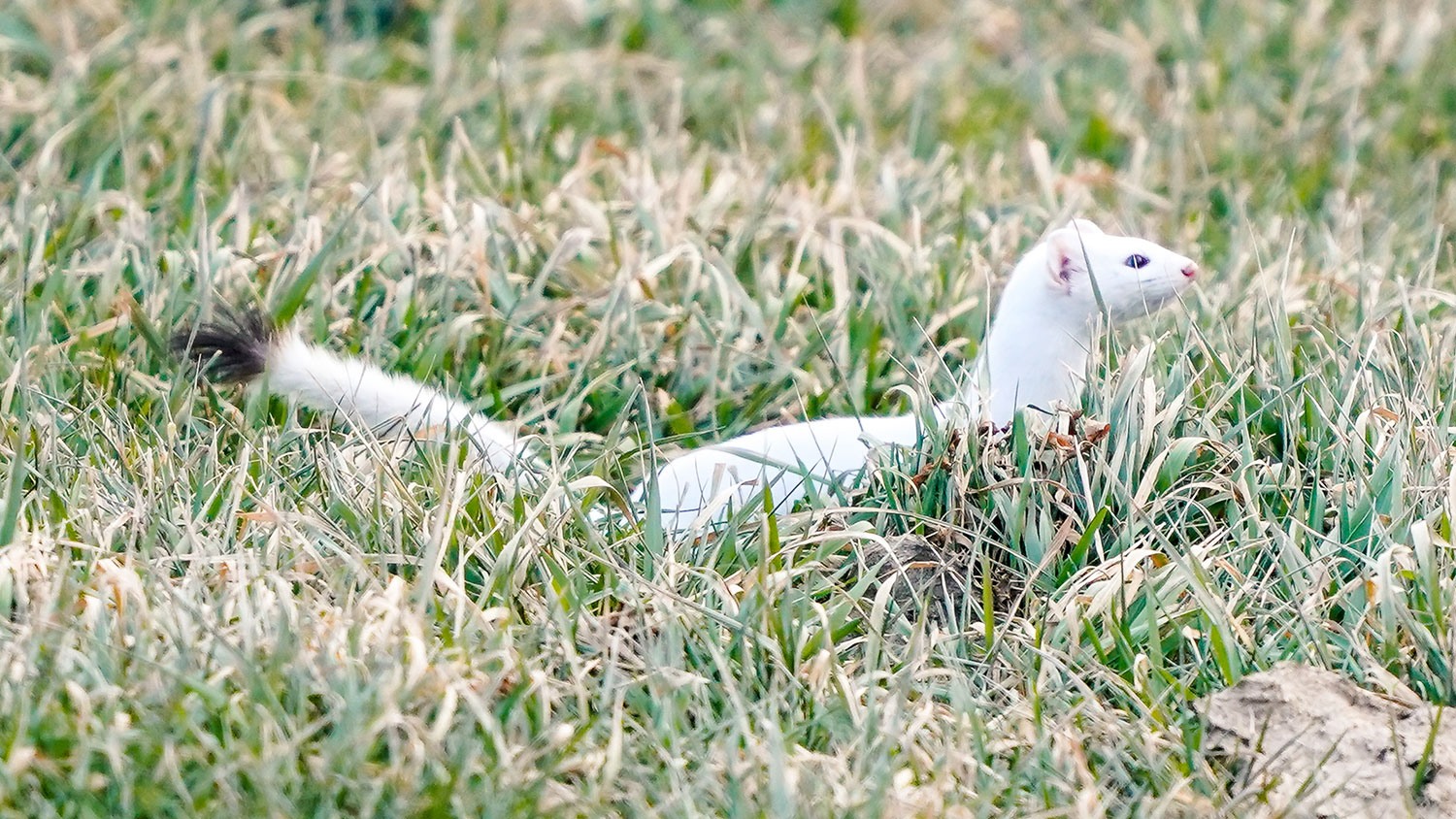
Pictured: Long-tailed weasel winter coat
Short-tailed and least weasels are similar in color.
Weasel vs Black-Footed Ferret
The department often gets reports of black-footed ferrets that are actually weasels in transition between summer and winter coats.
Black-footed ferrets are believed to have been extripated from North Dakota in the early 1950s, though records of sightings continued until the 1970s.
These ferrets are are associated exclusively with prairie dog towns.
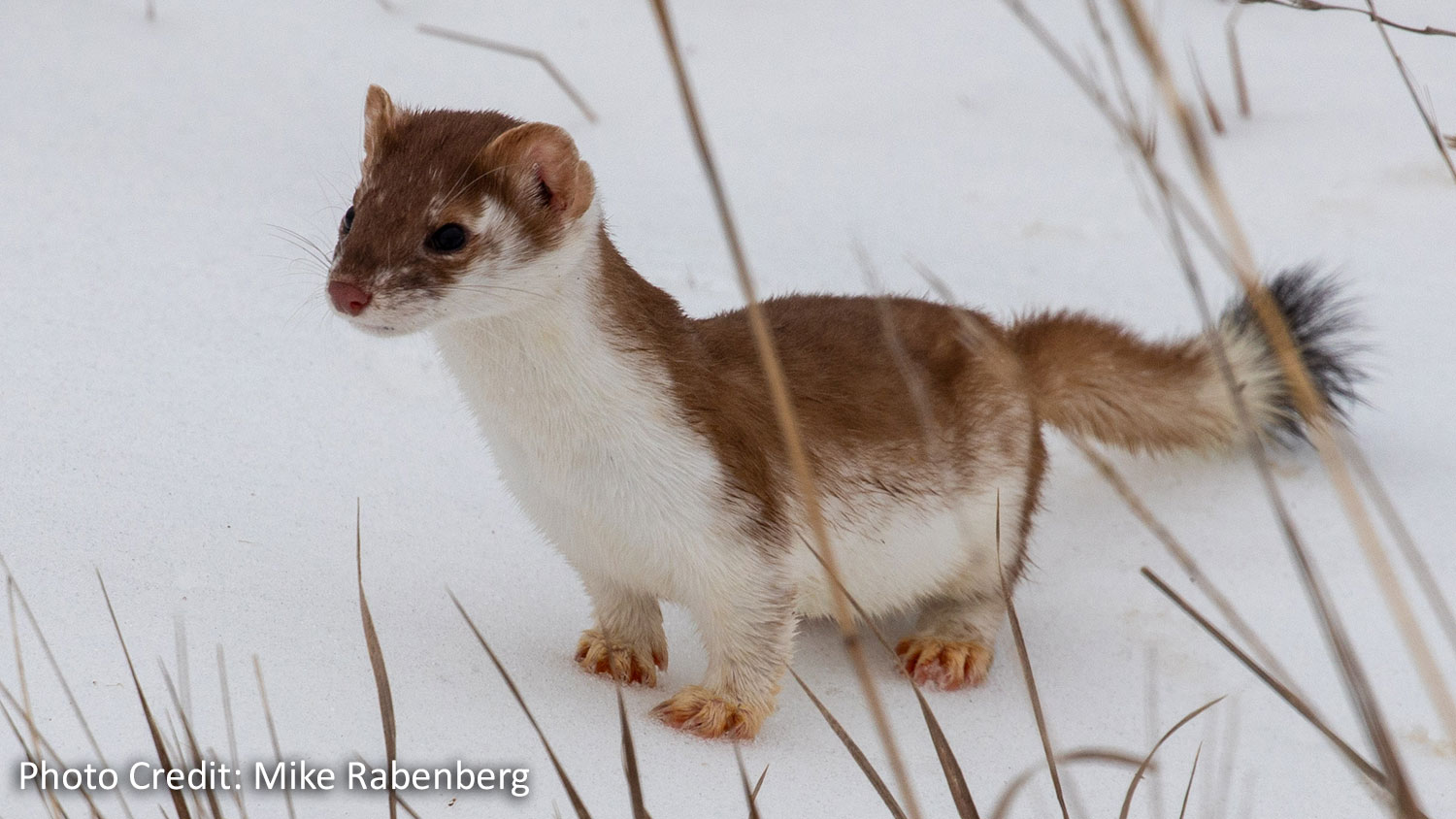
Pictured: Long-tailed weasel transitional coat
Weasels lack the tell-tale black band over the eyes.
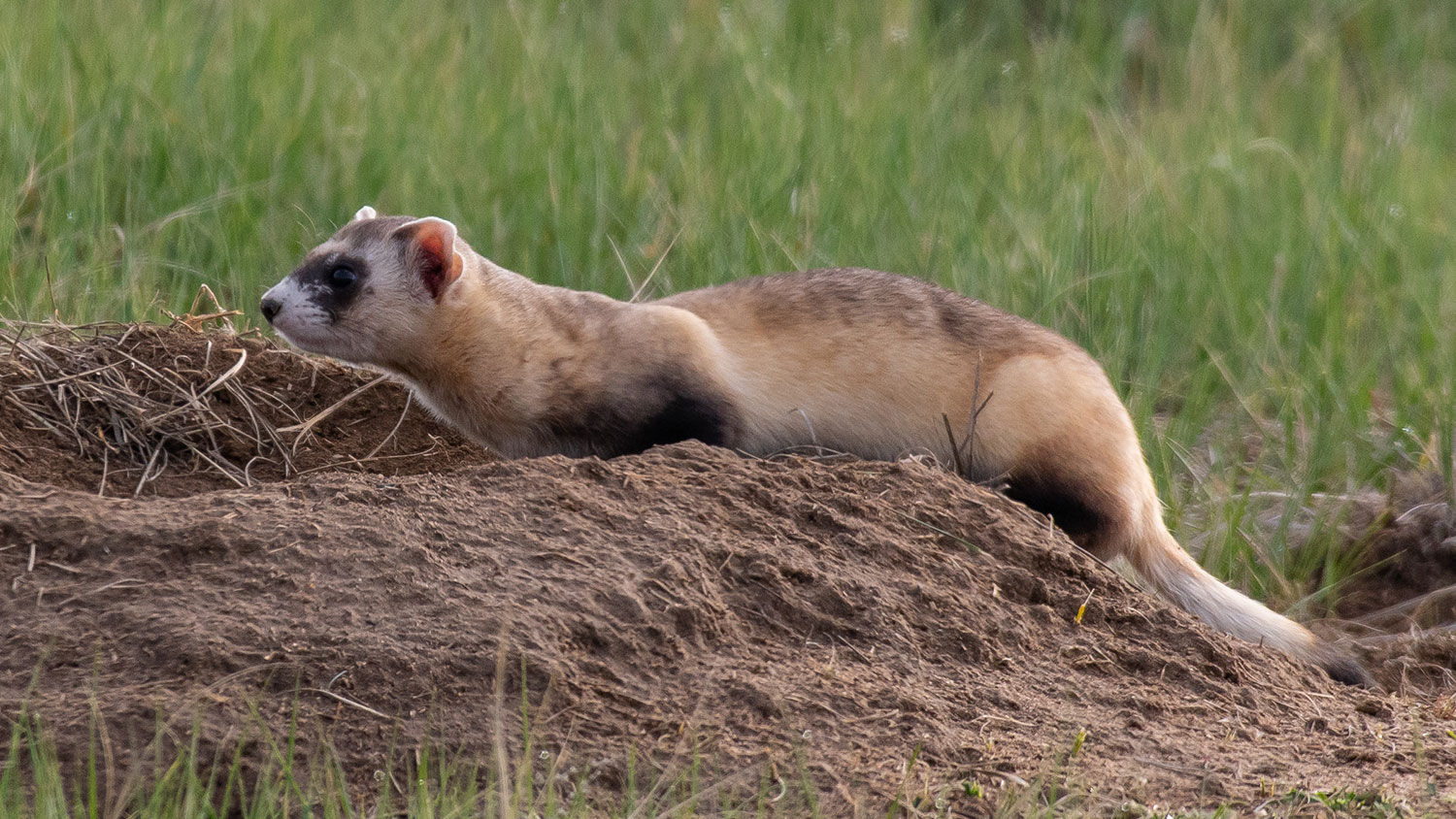
Pictured: Black-footed ferret
Overall buff color with the throat and belly generally whiter. The feet are black, as is the tip of the tail. A black band covers the eyes, and is more prominent in younger individuals.
